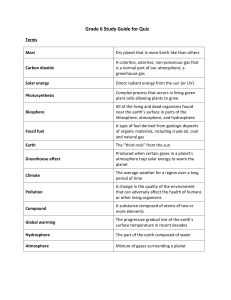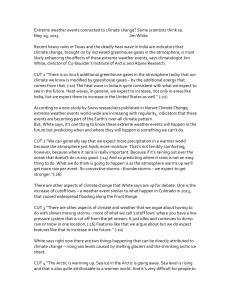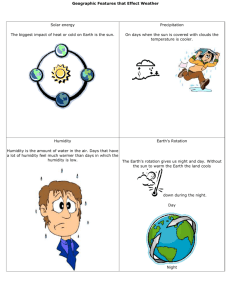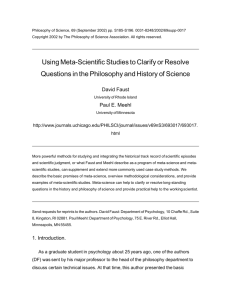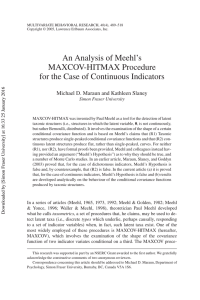increasingly more powerful
advertisement
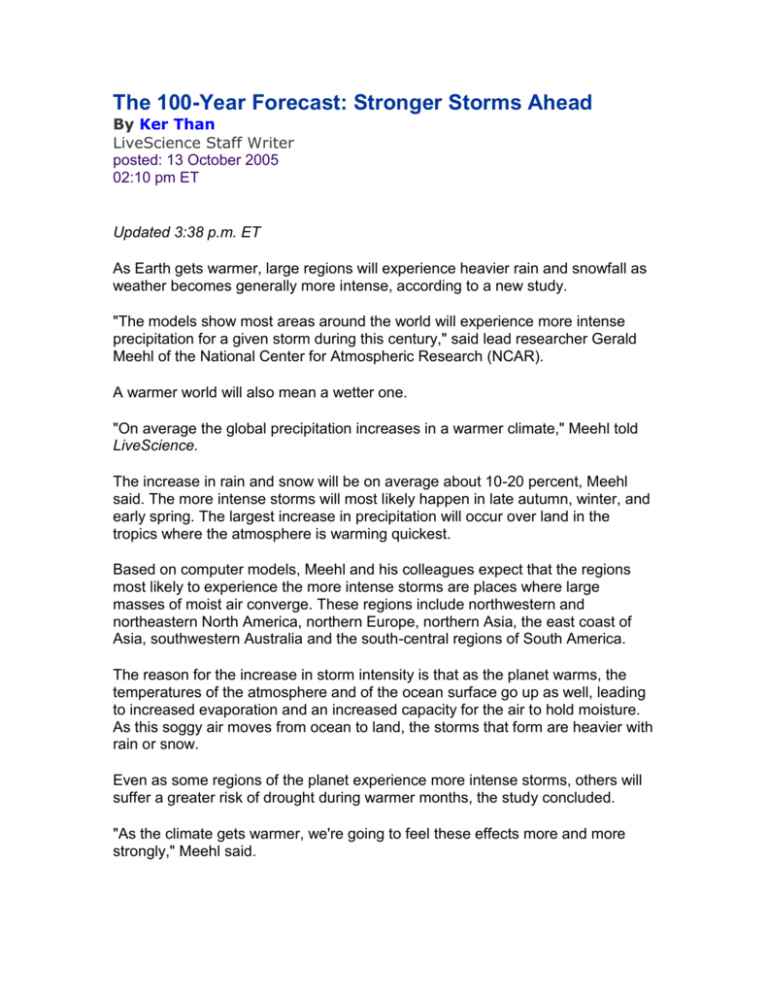
The 100-Year Forecast: Stronger Storms Ahead By Ker Than LiveScience Staff Writer posted: 13 October 2005 02:10 pm ET Updated 3:38 p.m. ET As Earth gets warmer, large regions will experience heavier rain and snowfall as weather becomes generally more intense, according to a new study. "The models show most areas around the world will experience more intense precipitation for a given storm during this century," said lead researcher Gerald Meehl of the National Center for Atmospheric Research (NCAR). A warmer world will also mean a wetter one. "On average the global precipitation increases in a warmer climate," Meehl told LiveScience. The increase in rain and snow will be on average about 10-20 percent, Meehl said. The more intense storms will most likely happen in late autumn, winter, and early spring. The largest increase in precipitation will occur over land in the tropics where the atmosphere is warming quickest. Based on computer models, Meehl and his colleagues expect that the regions most likely to experience the more intense storms are places where large masses of moist air converge. These regions include northwestern and northeastern North America, northern Europe, northern Asia, the east coast of Asia, southwestern Australia and the south-central regions of South America. The reason for the increase in storm intensity is that as the planet warms, the temperatures of the atmosphere and of the ocean surface go up as well, leading to increased evaporation and an increased capacity for the air to hold moisture. As this soggy air moves from ocean to land, the storms that form are heavier with rain or snow. Even as some regions of the planet experience more intense storms, others will suffer a greater risk of drought during warmer months, the study concluded. "As the climate gets warmer, we're going to feel these effects more and more strongly," Meehl said. Separate research recently found that hurricanes are getting stronger but are occurring less frequently, likely due to warmer ocean temperatures. In another recent study, NCAR researcher Jeffrey Yin used computer climate simulations to show that large-scale rain and snow storms known as frontal storms are moving polewards, driven also by global warming. Meehl's study suggests that the planet will continue to see increased precipitation for several more decades, regardless of any changes humans make now. "Even if you could stabilize greenhouse gas concentrations in the atmosphere at present day levels, the system has a certain amount of thermal inertia and would take several more decades to stabilize," Meehl said. "You'd have to really decrease the rate that you're putting stuff in the atmosphere to get the concentrations to level out and that'll probably be fairly difficult politically." That analysis is in line with other studies that indicate there is no way to stop the planet from growing warmer through this century. The study was published in a recent issue of the journal Geophysical Research Letters.

